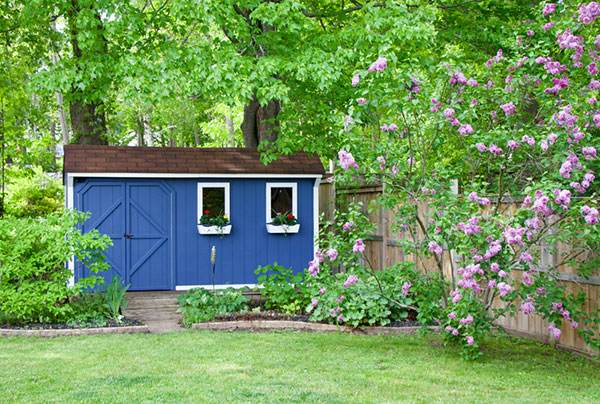How to Build a Hurricane Proof Shed
Author: Barbara Horwitz-Bennett | October 3, 2023
In 2019, the U.S. suffered $22 billion in damages and economic loss from hurricanes, reports AccuWeather. The National Oceanic and Atmospheric Administration reports that 2020 was the busiest hurricane season on record, and that 2021 is likely to follow suit. Other than paying attention to your local evacuation guidelines and building a safety kit, how can homeowners prepare for heavy weather?

While homeowners are likely to invest in hurricane protection for their homes, a hurricane-proof shed is just as essential to protect any valuables stored inside and to prevent materials and debris from blowing off the shed and striking the house.
The good news is that building a shed that can withstand the intense wind and rain of hurricane season doesn't have to be more expensive or difficult than building a standard shed for a calmer climate. Here's how to get started.
Hurricane-Proof Sheds: Where to Start
The first key to hurricane-proofing a shed is building a strong foundation. From there, every major component of the structural system must be securely connected to every other part, all the way to the foundation, instructs U.S. Virgin Islands architect Doug White, with the goal of creating a direct structural link between the roof and the ground.
While there are numerous materials and prefabricated products available for building sheds, the experts highly recommend starting with a concrete slab or concrete piers. Slabs must be reinforced with rebar to meet high-velocity wind zone codes. However, homeowners in flood zones should opt for piers. The next step after either option is to build a floor frame, which will need to be connected to the shed walls.
Before starting on your shed project, it's important to understand that some states and local governments place regulations on the hardware used to securely connect all components within the structure. For example, Miami-Dade County, Florida, requires that certain models of plastic kit sheds be anchored to concrete by bolts, and that fasteners are used for all parts of the walls and roof structure.
Storm-Resistant Windows
Once the foundation is installed and the floor frame is secured, it's time to consider hurricane-proof shed walls and windows.
For the greatest protection against shattered windows — which can damage items stored inside or even cause the shed to collapse — double-paned glass should be used. Shutters that are bolted to the outside of the windows and door are also a good idea. Usually made from metal or polycarbonate, these shutters are more expensive than decorative options but are well worth the investment.
A less expensive alternative is installing permanent bolts to attach plywood before every severe storm.
Roofing Options for Wind and Rain
In choosing a roofing type for your hurricane-proof shed, consider what waterproof shed roofing options are appropriate for your local climate. Corrugated metal and plastic are both popular and budget-friendly options. Homeowners should be vigilant when following manufacturers' guidelines for the recommended type of fastener to use on a shed roof to prevent leaks or failing seams and gaskets.
Besides roof material, roof shape makes a difference. Researchers at the New Jersey Institute of Technology found that limiting the size of roof overhangs can help deflect wind uplift forces that could trigger a roof failure. To prevent a gale-force wind from ripping off your shed roof, overhangs should be limited to less than 20 inches in size.
As hurricane season approaches — running from June to November in most areas — homeowners should inspect their shed roofs. Look for signs of sagging, discoloration, light penetration and rust. If you don't have the time or skills to rebuild a hurricane-proof shed on your own, you can always call in a trusted local roofing contractor.